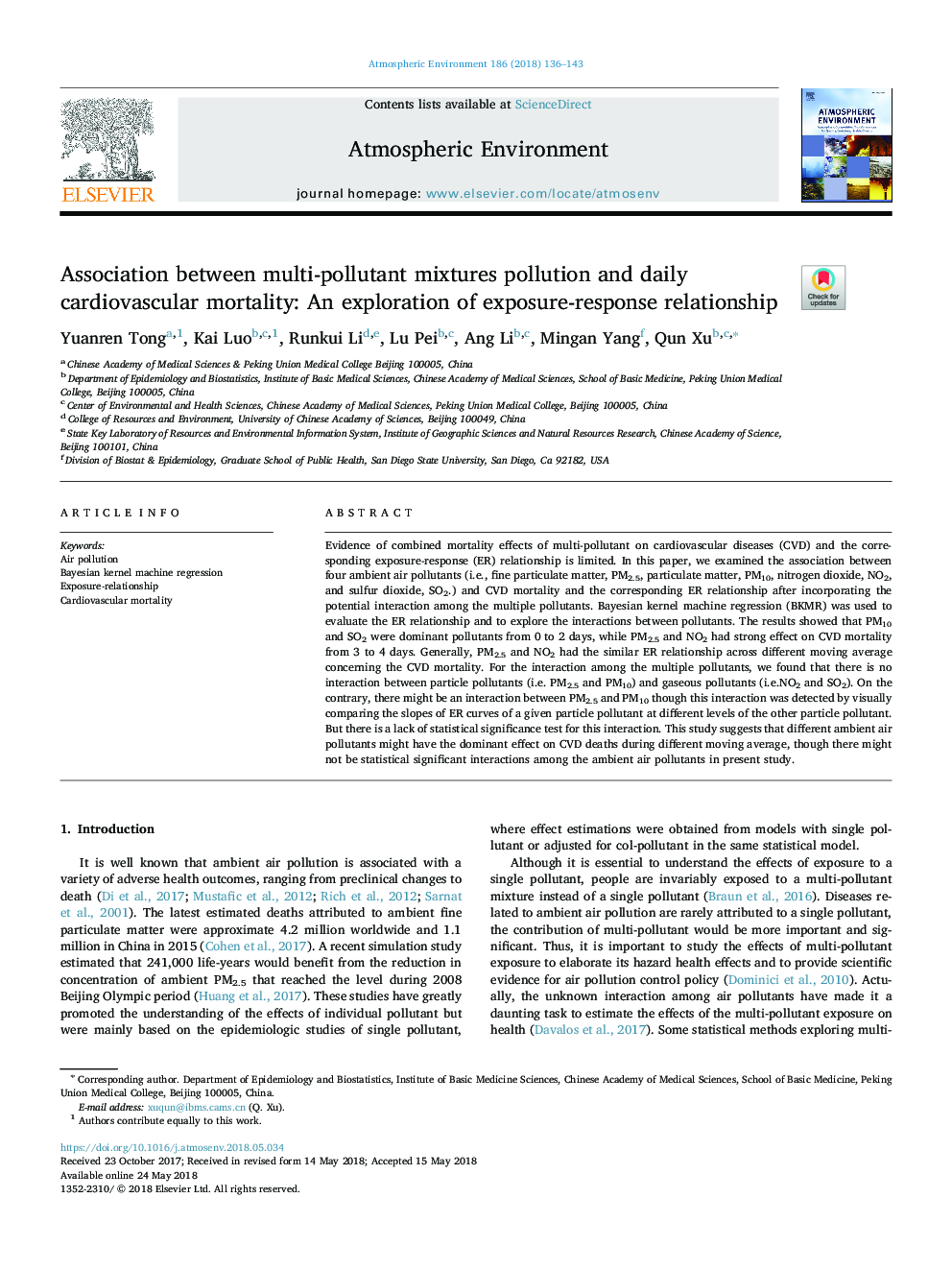| Article ID | Journal | Published Year | Pages | File Type |
|---|---|---|---|---|
| 8863677 | Atmospheric Environment | 2018 | 8 Pages |
Abstract
Evidence of combined mortality effects of multi-pollutant on cardiovascular diseases (CVD) and the corresponding exposure-response (ER) relationship is limited. In this paper, we examined the association between four ambient air pollutants (i.e., fine particulate matter, PM2.5, particulate matter, PM10, nitrogen dioxide, NO2, and sulfur dioxide, SO2.) and CVD mortality and the corresponding ER relationship after incorporating the potential interaction among the multiple pollutants. Bayesian kernel machine regression (BKMR) was used to evaluate the ER relationship and to explore the interactions between pollutants. The results showed that PM10 and SO2 were dominant pollutants from 0 to 2 days, while PM2.5 and NO2 had strong effect on CVD mortality from 3 to 4 days. Generally, PM2.5 and NO2 had the similar ER relationship across different moving average concerning the CVD mortality. For the interaction among the multiple pollutants, we found that there is no interaction between particle pollutants (i.e. PM2.5 and PM10) and gaseous pollutants (i.e.NO2 and SO2). On the contrary, there might be an interaction between PM2.5 and PM10 though this interaction was detected by visually comparing the slopes of ER curves of a given particle pollutant at different levels of the other particle pollutant. But there is a lack of statistical significance test for this interaction. This study suggests that different ambient air pollutants might have the dominant effect on CVD deaths during different moving average, though there might not be statistical significant interactions among the ambient air pollutants in present study.
Related Topics
Physical Sciences and Engineering
Earth and Planetary Sciences
Atmospheric Science
Authors
Yuanren Tong, Kai Luo, Runkui Li, Lu Pei, Ang Li, Mingan Yang, Qun Xu,
